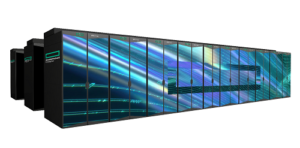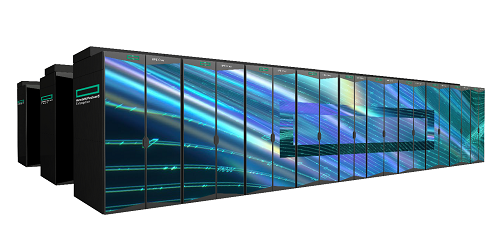
Finland’s LUMI HPE supercomputer
The HPE-AMD supercomputing tandem has had a bang-out week for systems wins and installations – and it’s only Wednesday.
On Monday, Australia’s Pawsey Supercomputing Centre announced HPE has been awarded a $48 AUD million systems contract. Yesterday, Los Alamos National Lab said it has stood up “Chicoma,” based on AMD processors and the HPE Cray EX supercomputer architecture.
And today, Finland’s CSC IT Center for Science said it has contracted with HPE for a half exaFLOPS AMD-powered HPE Cray EX that, expected to deliver 552 petaFLOPS upon installation next year, would exceed the current world’s no. 1 system, Japan’s Fugaku, on the TOP500 list for the Linpack benchmark.
Slated for the CSC in Kajaani, Finland by mid-2021, LUMI is a unique European supercomputer endeavor, accprdomg to CSC. with 10 European countries and the EuroHPC Joint Undertaking (EuroHPC JU) investing in a joint system.
CSC said that once its operational next year, the LUMI supercomputer – an investment by the European Commission and 10 partner countries of more than €200 million over the lifecycle of the system – will be one of the most competitive and green supercomputers in the world.
LUMI will be powered by AMD Instinct GPUs and the global bandwidth of the GPU partition is 160 TB/s. Its data analytics partition will have 32 aggregated terabytes of memory and 64 visualization GPUs. The system’s CPU partition that will feature 64-core AMD EPYC CPUs.
In total, LUMI will have storage of 117 petabytes and an aggregated I/O bandwidth of 2 terabytes per second. The storage system will have three components: a 7-petabyte partition of flash storage, combined with a more traditional 80PB-capacity storage both based on the Lustre parallel filesystem, as well as a data management service based on Ceph that is 30PB in volume.

LUMI will also have an OpenShift/Kubernetes container cloud platform for running microservices, and all the different compute and storage partitions will be connected to the Cray Slingshot interconnect of 200 Gbit/s.
LUMI takes over 150m2 of space, about the size of a tennis court. The weight of the system is nearly 150 000 kilograms (150 metric tons).

“The pre-exascale supercomputer hosted by the LUMI consortium will be among the top five in the world,” the organizations said. “Together with the other EuroHPC pre-exascale and petascale supercomputers that will be deployed in 2021, LUMI supercomputer will help Europe’s public and private users address many daunting research and innovation problems across different areas from weather and climate change through cybersecurity to drug discovery and personalised medicine.”
The LUMI system will align the Digital and Green Deal policies of the European Commission, using 100 percent renewable carbon neutral energy.
CSC’s data center in Kajaani is among the world’s most eco-efficient: it uses 100 percent renewable energy produced with hydropower. LUMI’s waste heat will be used in Kajaani’s district heating network: 20 percent of the area’s yearly district heating needs will be provided by LUMI’s waste heat, according to Khalil Rouhana, deputy director general of the Directorate General for Communications Networks, Content and Technology (DG Connect) of the European Commission.
“We are committed to supporting EuroHPC JU to seize opportunities in next-generation supercomputing and bolster R&D in science, advance innovation and unlock economic growth,” said Peter Ungaro, senior vice president and general manager, HPC and mission critical solutions, HPE. “We are honored to continue collaborating with EuroHPC JU, and through our partnership with AMD, build one of the world’s fastest pre-exascale supercomputers for Europe.”




